Earlier this month, a panel of presenters from UBC, Examoto, a UBC Company, and the FDA participated in a round table at the 3rd Aligning Drug Safety Functions & REMS Summit. The goal of the summit was to introduce new methods of improving REMS program effectiveness while also eliminating the risk.
The roundtable session, Innovations in REMS Technology, focused on advances in technology that integrate REMS requirements into the day-to-day workflow of health care systems. The key topics covered included QR code usage in REMS, reducing REMS burden using a pharmacy Application Programming Interface (API), and REMS integration and innovation with HL7 FHIR and SPL.
QR Code Usage in REMS
A QR code contains data for a locator or website like a REMS program website. QR codes can improve the efficiency of REMS by reducing the costs related to printing forms while also reducing the burden of data entry to the stakeholders while completing forms. Examples of this are including a QR code on a form to allow a stakeholder direct access to a complimentary online form. This reduces printing costs and improves patient access to medicines.
Reducing REMS Burden Using a Pharmacy Application Programming Interface (API)
An API allows IT Systems to “talk to each other” programmatically without user intervention. The Examoto Pharmacy REMS API allows a pharmacy information system to obtain a REMS Dispense Authorization without the pharmacist being required to leave their pharmacy IT system. This benefits the pharmacy by reducing the burden on the pharmacy staff, improving data quality by eliminating human error by data entry, and improving adherence to REMS compliance.
REMS Integration and Innovation with HL7 FHIR
HL7 FHIR is a data standard for exchanging healthcare information electronically. This topic builds upon the previous two solutions and describes a proposed standard that will integrate REMS into the Enterprise Health Record (EHR) System. The proposal is to integrate the REMS requirements i.e., Stakeholder Enrollment, Certification, or Dispense Authorization into the current provider and pharmacy workflows. An example of this could be a provider prescribing a medicine that is part of a REMS. Like the example utilizing the pharmacy API, the Provider would be alerted in the EHR that the medicine is part of a REMS and the REMS requirements that need to be met for the patient to receive the medicine. The goal of this proposal is the same as the examples in the topics above with the exception that it is attempting to homogenize the current provider and pharmacy procedures with the REMS requirements.
There is still more work that REMS providers can do in providing in-workflow solutions for prescribers and pharmacies who are interacting with a REMS-required therapy. These three solutions will continue to streamline the processes associated with prescribing and dispensing these products, benefitting the healthcare system and patients alike. UBC and Examoto provide effective and integrated solutions across the REMS environment, from PMO to operations and technology. To learn more about our best-in-class offering, click here.
About the Author
Ernie Anastasi is the Director of Technical Operations at Examoto, a UBC Company. He is currently overseeing the team that develops IT solutions for REMS programs. He has 23 years of experience building Enterprise IT solutions and is passionate about software quality and SDLC processes.







